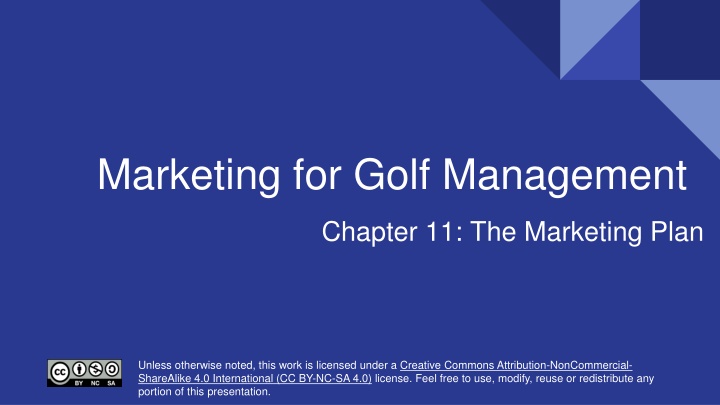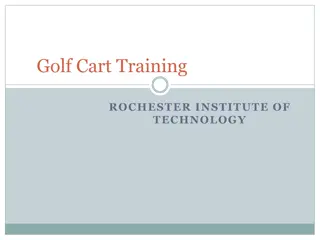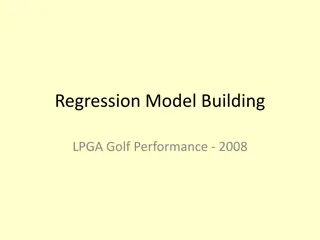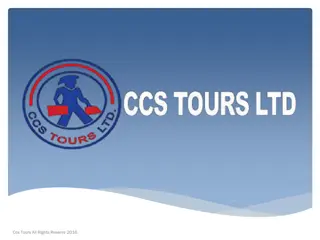Golf Management Marketing Plan Essentials
Dive into the functions of a marketing plan, from identifying customer needs to developing a comprehensive strategy. Learn about the roles within marketing planning teams, and understand the critical functions a marketing plan must fulfill for business success.
Download Presentation

Please find below an Image/Link to download the presentation.
The content on the website is provided AS IS for your information and personal use only. It may not be sold, licensed, or shared on other websites without obtaining consent from the author.If you encounter any issues during the download, it is possible that the publisher has removed the file from their server.
You are allowed to download the files provided on this website for personal or commercial use, subject to the condition that they are used lawfully. All files are the property of their respective owners.
The content on the website is provided AS IS for your information and personal use only. It may not be sold, licensed, or shared on other websites without obtaining consent from the author.
E N D
Presentation Transcript
Marketing for Golf Management Chapter 11: The Marketing Plan Creative Commons Attribution-NonCommercial-ShareAlike 4.0 International (CC BY-NC-SA 4.0) Creative Commons Attribution-NonCommercial-ShareAlike 4.0 International (CC BY-NC-SA 4.0) Unless otherwise noted, this work is licensed under a Creative Commons Attribution-NonCommercial- ShareAlike 4.0 International (CC BY-NC-SA 4.0) license. Feel free to use, modify, reuse or redistribute any portion of this presentation.
11.0 Learning Objectives In this chapter, we will: Explain the functions of a marketing plan. Develop a marketing plan. Identify types of forecasting methods and their advantages and disadvantages. Apply marketing planning processes to ongoing business settings. Identify the role of measuring success and gaining feedback on marketing efforts.
11.1 The Marketing Plan The average tenure of a chief marketing officer (CMO) can be measured in months If sales go up, the CMO can be lured away by a larger company or promoted If sales go down, CMOs can find themselves fired Oftentimes nonmarketing executives have unrealistic expectations of their marketing departments and what they can accomplish Much as firms must set their customers expectations, CMOs must set their organization s marketing expectations. Marketing plans help them do that A well-designed marketing plan should communicate realistic expectations to a firm s CEO and other stakeholders Another function of the marketing plan is to communicate to everyone in the organization who has what marketing-related responsibilities and how they should execute those responsibilities
11.2 Marketing Planning Roles The CMO of a business unit is likely to be responsible for the creation of its marketing plan However, the CMO is generally assisted by marketing professionals and other staff members, who often work on marketing planning teams as needed Some of the team members specialize in certain areas Some marketing-analyst positions are entry-level positions Marketing analysts, who are constantly updating marketing information, are likely to be permanent members of the CMO s staff In some consumer-goods companies with many brands, managers serve on their firm s marketing planning teams on an as-needed basis
11.3 Functions of the Marketing Plan What a Marketing plan needs to do: Identify customers needs. Evaluate whether the organization can meet those needs in some way that allows for profitable exchanges with customers to occur. Develop a mission statement, strategy, and organization centred on those needs. Create offerings that are the result of meticulous market research. Form operations and supply chains that advance the successful delivery of those offerings. Pursue advertising, promotional, and public relations campaigns that lead to continued successful exchanges between the company and its customers. Engage in meaningful communications with customers on a regular basis.
11.3 The Marketing Plans Outline Executive Summary The Business Challenge A brief description of the offering and the goals of the plan The Market Customers: Who are they, and what do they need? Company analysis: Your firm's strengths and weaknesses relative to this market and the offering Collaborators: Your collaborators could include suppliers and/or distributors or retailers Competitors: Who are they, and what are they doing? Business climate: The business climate includes the opportunities and threats created by environmental forces The Strategy The strategy: Why did you choose the strategy you did? The offering: Provide details on the features and benefits of the offering, as well as its pricing options The communication plan: How will the offering be launched? What will the ongoing communication strategies be? Distribution: How will the offering be sold? Who will sell it? Who will ship it? Who will service it? Budget Investment: Provide details about the budget needed to launch and maintain the offering Return: List both the short-term and long-term financial goals of the offering, including its projected sales, costs, and net income Other resources required Conclusion
11.4 Forecasting The sales forecast is the estimate of how much the company will actually sell Accuracy is important when it comes to forecasts If executives overestimate the demand for a product, the company could end up spending money on manufacturing, distribution, and servicing activities it won t need Underestimating demand can be just as devastating If the company isn t ready to deliver the amount of the product the market demands, then other competitors can steal sales the firm might otherwise have captured A sales forecast is actually a composite of a number of estimates and has to be dynamic as those other estimates change A common first step is to determine market potential. Once the marketing executive has an idea of the market potential, the company s sales potential can be estimated A firm s sales potential is the maximum total revenue it hopes to generate from a product or the number of units of it the company can hope to sell Better forecasts can be obtained by using multiple methods, forecasting for various scenarios, and tracking actual data (including sales) and adjusting future forecasts accordingly
11.4 Forecasting Methods Judgment and Survey Techniques Customer and Channel Surveys Sales Force Composite Executive Opinion Expert Opinion Time Series Techniques Correlates and Other Models Response Models Market Tests
11.5 Ongoing Marketing Planning and Evaluation Marketing plans are created frequently, not only when a new offering is being launched The key to a successful ongoing marketing strategy is twofold: understanding causality and good execution of the marketing plan Causality is the relationship between two variables whereby one variable is a direct consequence of the other Drawing the wrong conclusions about causality can lead to disastrous results A marketing audit is an examination or snapshot of the state of a company s marketing strategies as they are actually implemented Fidelity is the degree to which the plan is being implemented as it is supposed to be Complete and partial audits can be done internally or by a consulting firm in order to find areas for improvement






















